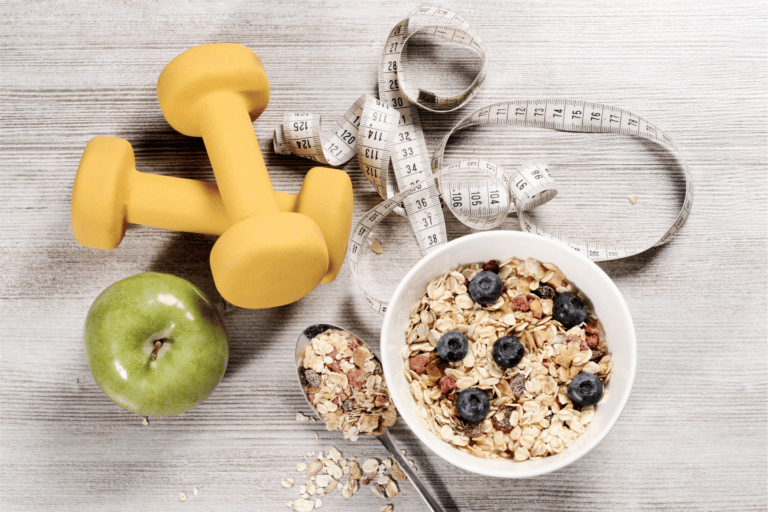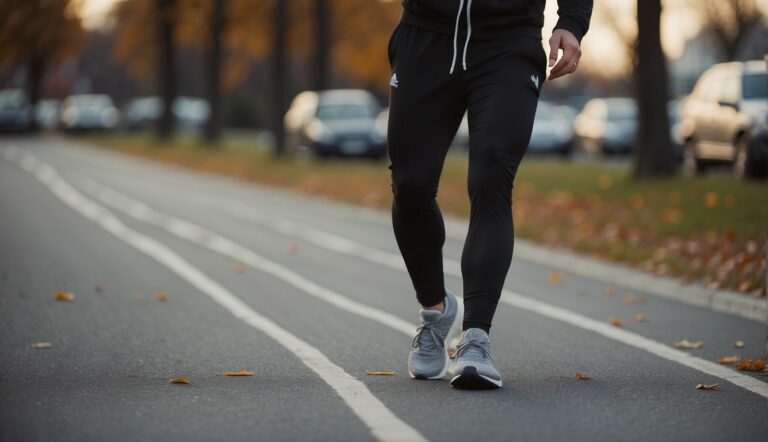Is Running in the Heat Good for You? [4 Helpful Benefits & 3 Dangers]
If there’s one thing most runners avoid like the plague, it’s the heat. An array of different factors can make for an unpleasant run, but the heat may be the worst of all. Should runners avoid the heat, or could it actually be good for them?
Running in the heat is good for runners and may improve their overall performance. Once runners are able to run at high temperatures, they will perform better at lower temperatures as well. However, certain precautions should be taken when running in extreme heat, including dressing appropriately for the weather and staying hydrated.
Read on to find out how heat affects running performance, the pros and cons of running in the heat, and potential tips to combat high temperatures!
Does heat affect running performance?
Many of the world’s greatest runners come from the continent of Africa, but have you ever stopped to wonder why that is?
African runners have many things working in their favor for endurance running: a lifestyle that is conducive to cardiovascular fitness, a genetic predisposition to running, and more. One factor that often goes overlooked is the heat that African runners endure. Is it possible that running in the heat makes them better runners?
Heat affects running performance. From a short-term perspective, heat negatively affects runners. The warmer the weather, the slower runners will race. However, over time, runners will acclimate to the heat which can potentially lead to better performance at all temperatures.
Heat absolutely affects running performance; whether the effects are positive or negative depends on the scope through which you examine your running.

On a short-term day-to-day basis, heat has a negative effect on running performance. Increases in heat are directly linked to a decrease in running pace; they are inversely proportional to each other.
In a study conducted with the purpose of determining the impact of weather on marathon runners, researchers concluded that as the temperatures rose, performance progressively decreased.
In short, this is because the body must exert more energy when running in the heat. When a runner’s body is insufficient at cooling down, heart rate and breathing increase, subsequently increasing difficulty.
However, if you are one to look at the glass as being half full, this can be a great thing! For runners who are willing to put themselves through some seriously intense workouts (safely), their bodies adapt to the heat and become more efficient.
When temperature drops and cold weather rolls in, runners who have acclimated to the heat will have an upper hand because their bodies are more efficient. This is known as heat acclimation for runners.
What is heat acclimation for runners?
It seems that every year, the temperatures are hotter and hotter. For runners, this is frightening! Who wants to run in the dead heat of summer?
Luckily, runners can benefit from heat acclimation. You may be wondering: what exactly is heat acclimation?
Heat acclimation is when the body changes and adapts to the external heat imposed upon it. This includes many complex physiological changes that create a more efficient runner.
Runners willing to endure tough workouts in hot temperatures can reap the many benefits heat acclimation has to offer.

Generally, the benefits are that of a more efficient body but specifically, they include lower heart rate, lower internal body temperature, etc.
The time period over which heat acclimation occurs is variable. Smaller changes like a decrease in internal body temperature can occur immediately, but increased blood volume may take weeks.
As a rule of thumb, the longer you run and acclimate your body to the heat, the more benefits will be available to you!
Potential benefits of running in the heat
In moderation, running in the heat can be a great tool for runners to boost their training and take their performance to the upper echelon!
The most glaring benefit of running in high temperatures is that most runners will become more efficient and experience even better performances at low and intermediate temperatures.
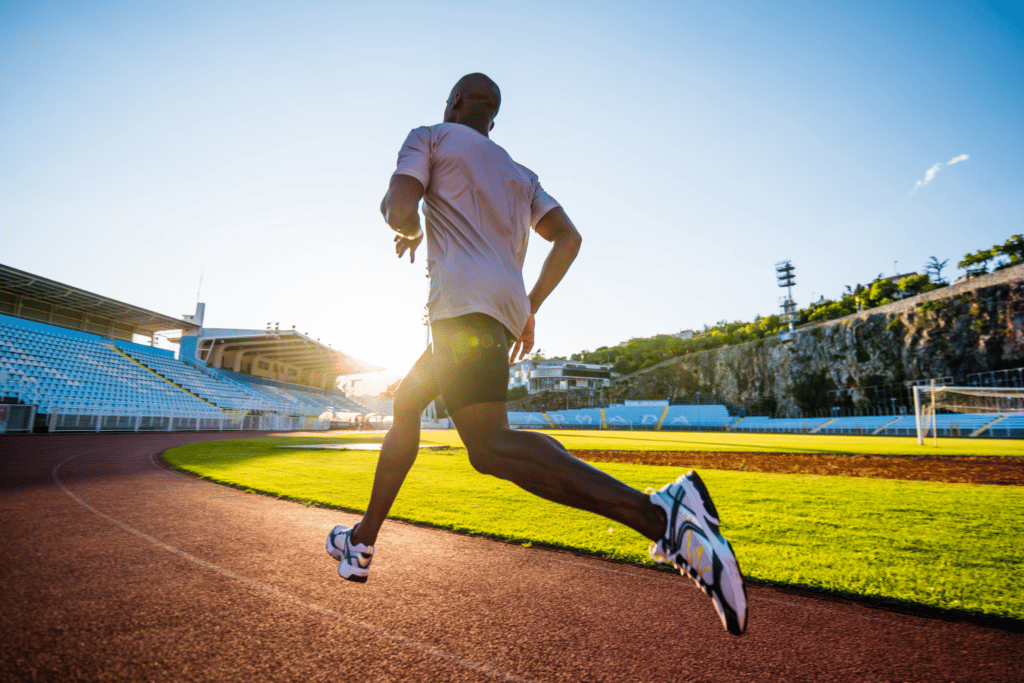
Here are four specific benefits of running in the heat:
- Lower RPE (rate of perceived exertion)
- Improved VO2 max
- Lower heart rate
- Mental fortitude
While running in the sun is hard and not very pleasant, the payoffs are great in the long term. Over time, the effects of running in the heat compound, and runners are better off for it.
Lower rate of perceived exertion (RPE)
A big part of how runners run is based on feel. Some runners prefer to race on metrics like heart rate and internal temperature, while others prefer to run to their feelings.
By running in the heat, runners can enjoy a lower perceived exertion rate once adequately acclimated.
Make no mistake, learning how to get used to running in the heat does not immediately lower the difficulty of running. In fact, it will probably increase because running in the heat is a sizable challenge!
Over time, as runners acclimate to the heat, runs will feel easier due to their bodies’ adaptations. This is measured by RPE, or rate of perceived exertion.
Rate of perceived exertion is a subjective scale used to measure the effort you put into any given athletic activity. In other words, it measures how intense the exercise felt on a scale of 1 to 10(1 being extremely easy, and 10 being nearly impossible to sustain for any period of time).
What may start as a 6 or 7 could potentially decrease to a 3 or 4 on the scale once acclimated to the heat. It is truly amazing how adaptable runners are!
Improved VO2 max
Running on its own is bound to increase VO2 max, but running in the heat can potentially accentuate that benefit!
Running in the heat improves runners’ VO2 max by making their bodies more efficient.
VO2 max is a measurement of how your body utilizes oxygen while working out. More specifically, it’s how efficiently your body can work in unison so that your muscles can use the oxygen that is breathed in.
A high VO2 max is better; it means you utilize oxygen more efficiently. By running in the heat, runners can raise this number to new heights!
The key to an improved VO2 max resulting from heat is the increased volume of blood plasma. When plasma volume increases, so does total blood volume and subsequently VO2 max measurements!
In fact, within about a week of heat training, blood plasma volume can nearly triple!
Lower heart rate
Similar to how runners experience higher VO2 maxes once acclimated to heat, heart rates also drop and become more efficient at sending oxygen to muscles through the bloodstream.
Running in the heat results in lower heart rates once acclimated to the heat. Once runners adjust to the strenuous demands that the heat imposes upon them, their cardiovascular system adapts and increases its stroke volume to accommodate.
A lower heart rate is one of the first ever discovered benefits of heat training for runners!
When testing athletes in tropical climates, researchers found that athletes had reduced elevated heart rates during exercise after having adjusted to a tropical climate (hot and humid, making it a real challenge for the body to cool itself off).
The cause can be attributed to multiple physiological workings. For example, increased blood volume makes it easier for the heart to improve its stroke volume.
Athletes also adapt to the heat and begin to sweat more, allowing the body to sufficiently cool itself off. This places less stress on the cardiovascular system and subsequently lowers the heart rate.
Mental fortitude
Running is not limited to a physical competition or game. Runners work much more than just their cardiovascular system and muscles when running; they must work their minds as well.
Running in the heat can build mental fortitude in newer runners. Once they discover they can push through extreme heat and complete tough workouts, the world of running is limitless.
While mental fortitude certainly is not as tangible as a VO2 max improvement or a decrease in our exertion levels, it’s undeniable that running builds grit.
Take a page out of David Goggins’ book; he started his career as a Navy SEAL and when that chapter of his life ended, he turned to ultra marathon running.
Why, you may ask? Because it required mental strength. It keeps him sharp around the edges and ready for anything that comes his way.
Now, you don’t need to be a Navy SEAL to benefit from building a tough mind. Running in the heat allows you to prove to yourself that you can finish that race (and do whatever other thing is standing in your way!).
It has the ability to give you hope when you need it most. While unmeasurable, it’s an immensely helpful benefit that extends beyond running.
Potential dangers of running in the heat
Unfortunately, running in the heat is accompanied by some serious risks that runners should be cautious of.
The three following potential problems stem from running in the heat.
- Dehydration
- Joint pain
- Heat illness or heat stroke
While running in the heat and acclimating your body to high temperatures can yield great performance results long term, runners must be weary of the inherent risk of extreme heat.
Dehydration
Even outside of exercise, dehydration is a major issue of being in extremely high temperatures. It’s even more of a concern for runners due to the sheer amount of internal temperature control their bodies must endure.
Dehydration is a likely issue that results from running in the heat. Between sweating and likely insufficient hydration, dehydration commonly occurs and comes with an array of other problems.
Research performed in 1999 concluded that not only is dehydration a prevalent issue among athletes, but that the majority of athletes do not sufficiently hydrate prior to training or competing.
Couple this with the fact that hot temperatures cause excessive sweating, and you have a recipe for disaster.
When the temperatures rise, the human body sweats in an effort to regulate our internal body temperature. The hotter it is, the more we must sweat to keep our temperature down.
Over time, this has a dehydrating effect on the body, especially if runners were already dehydrated to begin with.
To avoid suffering from dehydration, refer to our tips section down below!
Joint pain
Joint pain is a common ailment faced by avid runners. Running in the heat is likely to exacerbate this issue.
Running in the heat increases the likelihood that runners will suffer from joint pain due to dehydration. Dehydration subsequently results in joints being less lubricated, which increases overall friction and joint pain.
When we sweat so much during a run in the extreme heat, dehydration is hard to combat! Joint pain stems from dehydration because joints require sufficient lubrication to function properly.
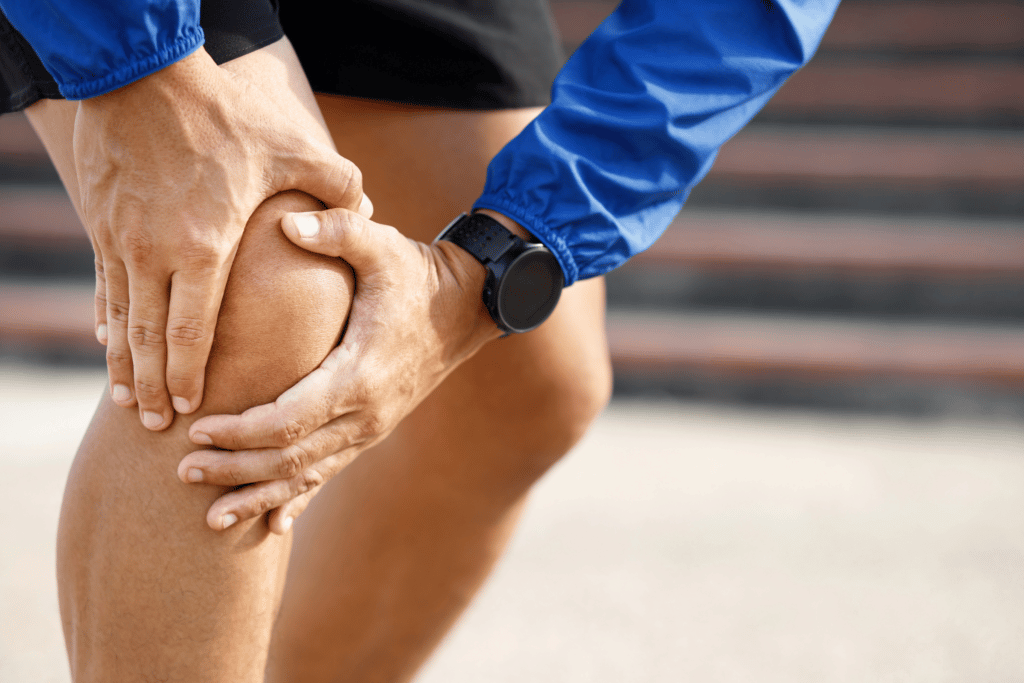
This becomes a glaring issue considering the fact that joint cartilage is estimated to be 70 to 80 percent water.
Without enough water in our bodies, the fluid in our joints dissipates and joints are left without enough lubricant. Friction then occurs and causes joint pain.
To avoid this potential problem, drink lots of water and always think ahead before running!
Heat stroke
Pushing past our bounds is great for our mental strength but not necessarily for our health. Too hard of a run in the heat can result in serious complications such as heat stroke.
Running in the heat can cause runners’ bodies to overheat and suffer heat strokes. This occurs when the body is incapable of regulating its internal temperature and can go as far as to lead to organ failure and death if not careful.
Heat strokes are not a laughing matter; when the body overheats, the organs could fail, resulting in death if not treated promptly.
For runners, heat strokes impose a serious risk. In fact, runners are more likely to suffer heat strokes than cardiovascular complications.
Heat strokes and other heat illnesses occur when the body’s internal temperature becomes too high to regulate.
Heat illnesses like rashes, cramps, and exhaustion occur up until an internal body temperature of 106°F; past that is defined as a heat stroke, a life-threatening heat illness.
How to prepare for running in the heat
Running in high temperatures boils down to proper preparation and being cautious. This way, runners can enjoy all the benefits without the risk of suffering from potential problems
The main issues that stem from the heat are dehydration and heat illness; both of those can be combated by our five following tips:
- Save easy runs for hot days
- Stay hydrated
- Run at cooler times of the day
- Wear moisture-wicking clothing
- Use a sauna
Please exercise caution when exercising. No run is worth your life.
Save easy runs for hot days
On hot days, it’s prudent to avoid doing interval training or anything of the sort. Opt to go for easy runs on days when the temperature is soaring.
By saving easy runs for hot days, runners lower the risk that they will overheat. Easier runs will keep heart rates down and lower the risk of heat illness.
Let’s face it: most runs should be easy anyway. The best way to cope with heat is to save these runs for days with the highest temperatures.

At high temperatures, running intervals is far too much work. It’s extremely strenuous on the body, and your intervals will be slow anyways. It practically negates the entire purpose of doing speed work.
Instead, run at an easy pace! This way, runners can get acclimated to the heat without torturing themselves and placing themselves at unnecessary risk.
Stay hydrated
Dehydration is a serious issue that comes from running, and even more so when it’s hot outside. Think ahead and stay hydrated!
Hydrating throughout the day, during and after a workout, is best for preventing dehydration. This will help runners feel energized and avoid suffering from joint pain that has been caused by dehydration.
It’s not enough to start drinking water right before working out. Hydrating is an all-day affair.
Furthermore, runners need to drink lots of fluids during and after workouts to rehydrate their bodies from sweating.
Consider the following tips to help stay sufficiently hydrated:
- Drink a glass of water when waking up in the morning
- Keep a water bottle with you during the day
- Drink water when you are hungry
- Don’t wait to feel thirsty to drink water
- Have carbohydrate drinks with electrolytes on hand for workouts
- Eat lots of fruits and vegetables (high water content)
- Avoid sugar and caffeine (diuretic effect)
Run at cooler times of the day
Avoiding the heat is practically impossible, especially if you live in an area with a warm climate. However, the effects of the heat can be offset by strategically choosing when to run.
By running early in the morning or late in the evening, runners can avoid the hottest temperatures that occur during the day. Better yet, runners can avoid the risk of sunburn and subsequent skin issues.
Waking up early in the morning or waiting until late at night to run can be inconvenient, but it is well worth the effort.
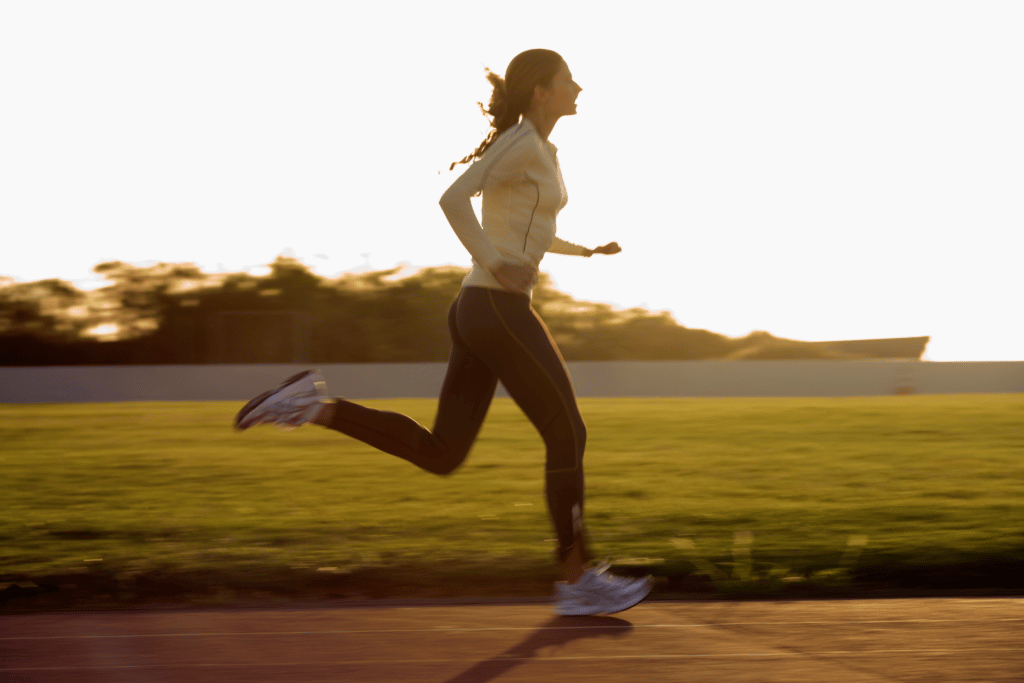
Oftentimes, running in the morning versus during the day can mean a difference of as much as 20 degrees! This plays a major role in running performance and the body’s ability to cope with the heat.
For example, in a place like Texas, it might be 80° in the morning and 98° by 2 in the afternoon. Eighty is hot enough to help yourself acclimate, but not too terrible; 98 is not safe to run in!
If possible, run when temperatures are lowest on hot days. You will thank yourself!
What to wear running in the heat
A large part of the danger that comes from running in the heat stems from a runner being unable to regulate their internal body temperature. Wearing moisture-wicking clothing can help combat this.
By wearing moisture-wicking clothing, runners can more easily regulate their body temperature. In humid climates where sweating does not cool off runners by itself, moisture-wicking clothing is absolutely essential.
Over the last decade or so, moisture-wicking clothing like Nike’s Dri-fit line has exploded! I must say, for good reason.
Comparisons between cotton clothing and synthetic, moisture-wicking clothing have shown a massive difference in the body’s ability to regulate body temperature.
Athletes who wore moisture-wicking clothing were found to have lower internal body temperatures and less retained sweat in their garments. This translates to better performance and a lower risk of heat illness!
Use a sauna
Can natural heat acclimation be replicated to help athletes perform better and build their tolerance for high temperatures? It turns out saunas may be the answer.
Runners can benefit from incorporating saunas into their training routines to help with heat acclimation.
Many of the benefits of running on hot days come from heat acclimation. Luckily, runners can enjoy many of those benefits without incurring all the risks.
Using saunas post-exercise is linked to various positive effects on training and performance; researchers found that sauna uses post-exercise increased blood plasma volume, reduced resting heart rate, and improved heart rate recovery after exercise.
Saunas are also great for recovery after a run. It’s a win-win!
What temp is too hot for running?
In many places, the summer brings extreme, unprecedented heat waves. Runners try to avoid them like the plague!
Although we’ve determined that running in the heat can actually yield many benefits to runners, just how hot is too hot?
Any temperature of about 90°F is too hot to run in unless you’re properly acclimated to the conditions. When running at 90°F or warmer, the chance of cramps and heat exhaustion increases tremendously.
Determining appropriate heat for running is based on what is known as WBGT, or wet bulb globe temperature. WBGT measures how heat affects the human body; a wet bulb is covered with a cloth, miming the body’s inability to cool itself through sweating in extreme situations.
In a 2007 study that researched heat illness among athletes, it was determined that any WBGT above 90.1°F is not safe for training or competition.
Anything above this temperature increases the likelihood that runners will suffer heat-related complications during their training. This can include heat cramps, heat exhaustion, and even heat stroke.
Heed this warning; deaths related to heat illness aren’t out of the question.
Is running in extreme heat good for you?
For runners who are keen on the idea of heat acclimation, extreme heat pushes their hand. Is extreme heat good for runners, or are the risks too high?
Extreme heat is not good for runners. Running in extreme heat increases the likelihood of runners suffering from heat strokes and consequently facing fatal consequences.
Running in extreme heat is a common cause of heat strokes. Heatstroke occurs when the body overheats and exceeds a temperature of 104°F.
Unfortunately, heat strokes are accompanied by fatal complications. When a heat stroke occurs, the body shuts down. The brain, heart, kidneys, and muscles begin to fail.
This is not a matter to be taken lightly. Between the years 2004 and 2018, an average of 702 people died of heat-related causes every year.
If you should choose to run in the extreme heat anyways, watch for symptoms like nausea, flushed skin, feeling faint, etc. These are tell-tale signs that a heat stroke is occurring or about to occur.
Is running in the sun good for you?
Hot days often come with beaming UV rays from the sun. They are unavoidable unless you rise and run at the crack of dawn or wait for the sun to set.
That said, is running in the sun good for runners?
Running in the sun is good for runners, but only to a certain extent. Runners can benefit from running in the sun because they receive vitamin D and become properly acclimated to the heat. However, too much time in the sun can increase internal body temperature and cause sunburns for runners.
Sunlight has many wonderful benefits; it gives us vitamin D, helps boost our immune system, and even makes us happier by boosting our serotonin levels!
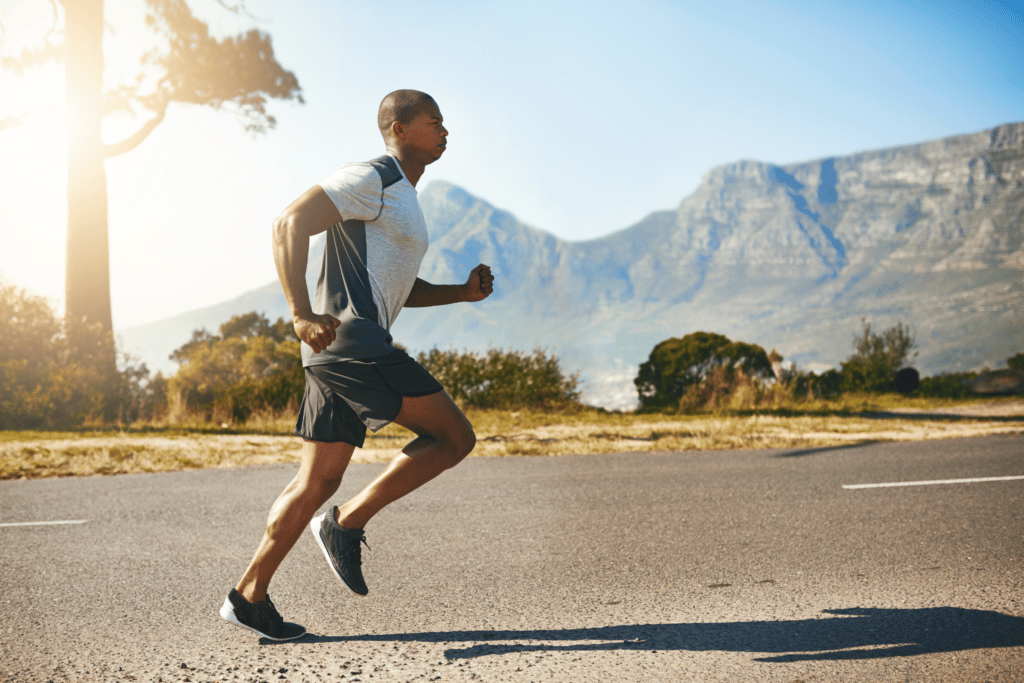
For runners, there’s also the added benefit of heat acclimation. Runners can better acclimate themselves to adversely hot temperatures by running in the sun.
When the sun is out and beaming, temperatures will be higher than if shaded. In fact, the difference may be as much as 10 to 15 degrees, according to a retired meteorologist.
From what we’ve learned about the effect of heat on performance, we know that this difference can slow runners down considerably. However, it can also speed them up by helping them acclimate to higher temperatures.
Contrarily, too much of a good thing can turn it bad. Prolonged amounts of sun exposure increase the risk of suffering from heatstroke or developing skin-related issues like sunburns and skin cancer.
If choosing to run in the sun for an extended amount of time, hydrate extremely well before running and lather on the sunblock. For more, read our all-encompassing article on sunblock and our favorite picks!
Is running in the heat harder?
Running in extreme heat can be more challenging than running in more moderate temperatures because of the risks of dehydration and heat stroke. Though if you take the proper precautions, you can still enjoy a healthy workout in the extreme heat.
What are the dangers of running in the heat?
Running in the heat can put you at risk of suffering from heat stroke or severe dehydration due to the additional sweating that occurs when temperatures are extremely warm.
Is running in the summer or winter more difficult?
The answer depends on the climate you live in, as running in extremely cold Canadian winters may be more challenging than running in the summertime in Middle America! It’s hard to say whether it’s harder to run in the summer or the winter without knowing more specific information regarding temperature.



